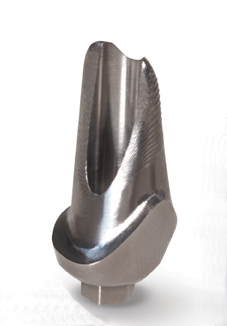Screw Retained Or Cement Retained Restorations. This question has been asked for decades every time we have to make a decision on how to restore dental implants. The good news is that we now have a good grasp of the answer to this question, and even though experts have written a lot on the subject, I can summarize everything in two words: “It depends”. It depends on the circumstances or characteristics of each particular case.


Let’s see if we can create some guidelines that will help us determine if screw-retained is better than cement retained, or vice versa.
A simple way to make the decision is to determine if its use is not recommended or “contraindicated. For example: The inter-arch distance available for a crown is only 4 millimeters. In this case the cement retained crown is contraindicated because the prepared abutment would be so short that it is very likely to loosen prematurely. If it is desirable or beneficial to improve the existing conditions with treatment to the opposing arch, or orthodontics, a cemented crown would be adequate, otherwise, here is the first guideline: A screw retained crown is the preferred choice for very short crowns.
Second example: You are restoring an implant in the maxillary anterior region, and the implant axis is labially inclined. If you use a screw retained crown here, this would place the screw access opening on the labial surface of the crown. In this case esthetics demands that the restoration be a cemented crown which would compensate for the location of the screw access opening. This brings us to our second guideline: A cemented restoration is the correct choice when the screw access hole would be seen in an area of the restoration that would compromise the esthetics. It is important to note that when the position of the implant placement is ideal, the screw access opening can be located on the cingulum of the anterior teeth, and a screw retained crown can be made, so just because the crown is in the maxillary anterior segment does not mean that it needs to be cemented.
Last example. An implant is placed deep under the alveolar crest of bone for proper emergence through the soft tissue. Assuming no esthetic contraindications, do you use a cement retained crown or a screw retained one? Which one would you choose? The issue here is avoiding periimplantitis caused by residual cement. In this example, both types of restorations could work well. A screw retained crown would allow a good emergence through the soft tissue and have no cement problems. However, a cemented crown would also work well if it is constructed over a custom abutment. The custom abutment would create the correct soft tissue emergence and place the cement margins in an easily accessible area to avoid leaving any residual cement. So here is a third and final guideline for this article: When the implant platform is deep under the tissue, the restoration of choice is either a screw retained crown, or a cement retained crown over a well designed custom abutment. A prefabricated abutment is not a good choice here.
I hope this simplifies the way to select your restoration of choice in these three examples, and you are welcome to comment with additional guidelines and recommendations of your own.
Dentist In West Palm Beach
Carlos Boudet, DDS
1840 Forest Hill Blvd, Suite 204
West Palm Beach, Florida 33406
Phone: Call 561-968-6022
Website: http://www.boudetdds.com
Blog; http://mywestpalmbeachdentist.blogspot.com

